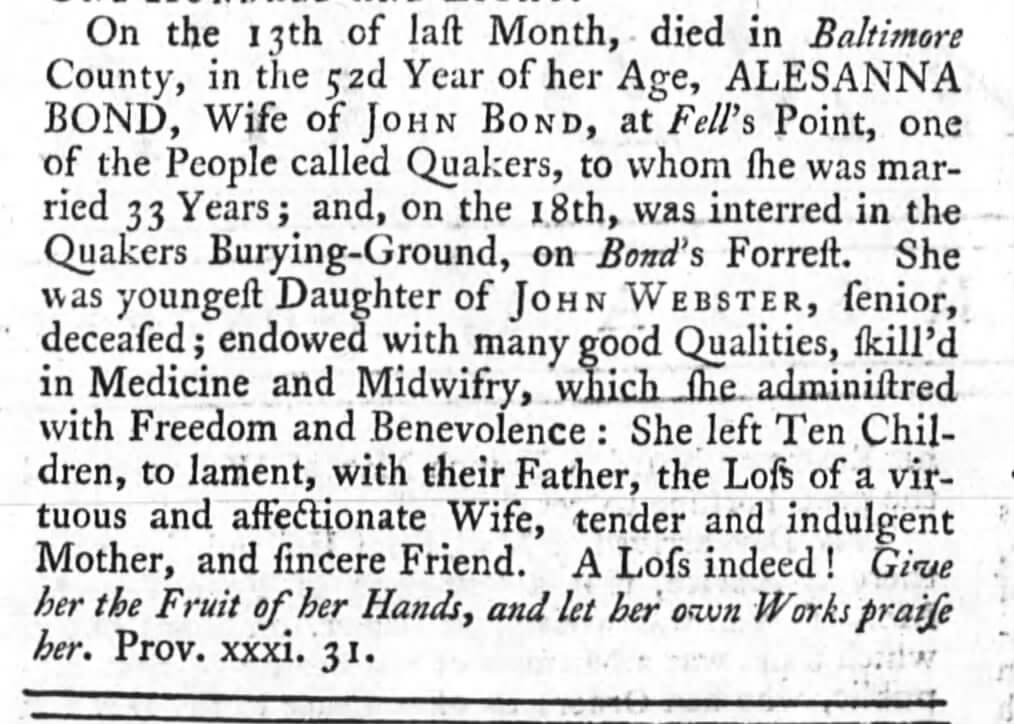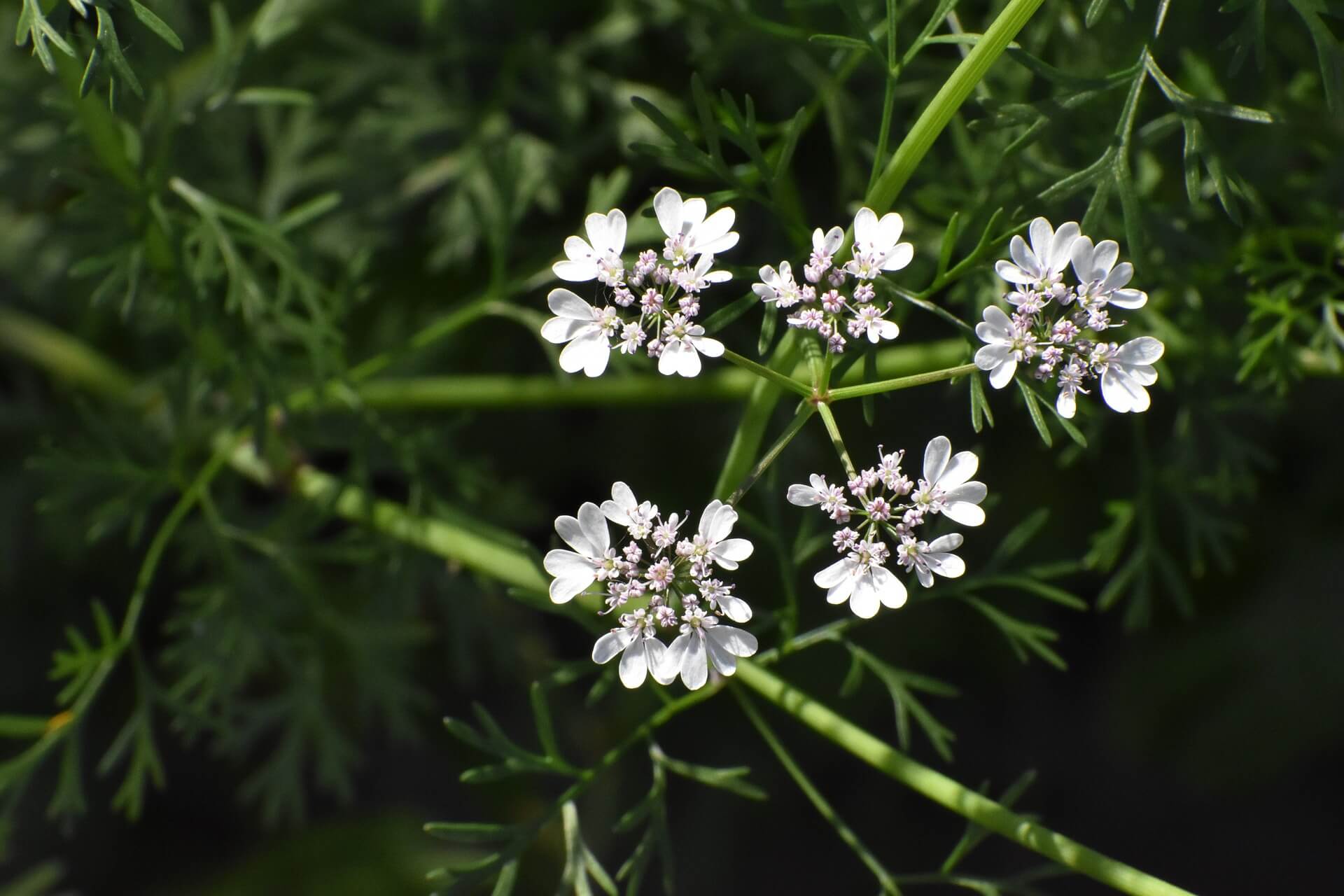This post may contain affiliate links. Probably doesn’t, but it might. It doesn’t cost you anything extra but if you use these links to buy something, we may earn a commission.
In the heart of Fell’s Point, Baltimore, a stone’s throw from the bustling Inner Harbor, lies a street with a story to tell. Aliceanna Street, with its quaint charm and intriguing name, beckons both visitors and locals alike to ponder its origins. Who was Aliceanna, and why does a street bear her name? Join us as we unravel the tale of this enigmatic figure whose legacy lives on through the bustling streets of modern-day Baltimore.
Alice Anna Webster, born in 1715, loved learning. She watched her mother tend to sick children and neighbors. She learned how to make a poultice from herbs in the garden. As the youngest of 8, with her next older siblings 5 and 10 years older than she was, Alice Anna had more of her mother’s attention. As she followed her mother around, Alice Anna learned how to grow herbs and how to use them, how to comfort the ill and how to ease pain, how to settle an upset stomach and how to deliver babies. Her father, John Webster, was proud of his baby girl and encouraged her to learn as much as she could.
She must have been called by both names all the time, for Alice Anna slid into Aliceanna and even Alesanna, with the 18th century’s easy acceptance of variant spellings. Alice Anna married at age 18, farmer-merchant John Bond, also a Quaker and brother-in-law of William Fell, founder of Fell’s Point.

Table of Contents
Fell’s Point, Maryland
Fell’s Point, steeped in history and named after the pioneering Fell family, stands as a testament to Baltimore’s maritime legacy. Originally one of the three settlements that eventually merged to form Baltimore City, Fell’s Point flourished due to its strategic location along a deep part of the harbor and its abundant timber—a perfect recipe for shipbuilding success. The Fells, renowned for their shipbuilding prowess, transformed this waterfront enclave into a bustling hub of maritime activity. In 1773, Fell’s Point officially became part of Baltimore City, solidifying its place in the annals of American maritime history.
A Quaker education
By the early 1700s, Maryland’s Quaker communities had already woven a rich tapestry of history spanning nearly a century. Alice Anna’s upbringing unfolded within a community that prized education for all, a progressive stance that extended even to girls and women—a rarity in those times. She was nurtured in an environment where intellectual growth knew no bounds, setting the stage for her own remarkable journey of learning and contribution.
After marrying John Bond, Alice Anna’s life blossomed into a tapestry of healing and nurturing. Amidst raising her ten lively children and mourning the loss of two young ones, she cultivated not just a family but a reputation as a healer. Alice Anna’s days were a symphony of tending to her medicinal and kitchen gardens, delivering babies as a skilled midwife, and attending to the general medical needs of her community. Despite the whirlwind of her bustling household, she remained a steadfast pillar of support for her neighbors and friends in need, always finding time to extend a healing hand or offer a soothing word.
Herbal remedies for healing
Aliceanna delved into the world of herbal remedies, harnessing the power of nature’s pharmacy to aid those in need. Her understanding of anatomy extended beyond the surface, as she skillfully set broken bones with a practiced hand. When news of the groundbreaking smallpox vaccine, first administered in 1721 in Boston, reached Baltimore, Aliceanna was likely among the first to consider its implications for her community. Drawing from her own experiences of childbirth, she honed her skills in midwifery, ensuring that each new life entered the world safely under her care. Recognizing the importance of cleanliness in healing, she meticulously tended to wounds, knowing that a clean slate was often the first step toward recovery.
In a bold departure from conventional medical practices, the Quakers embraced non-violence as a core principle, shunning archaic treatments like leeches and bloodletting. Alice Anna, steeped in these progressive beliefs, recognized the profound impact of both action and inaction on the body’s well-being. She grasped the significance of proper nutrition in maintaining health, ensuring that individuals had access to an ample food supply—a fundamental yet often overlooked aspect of holistic care.
A successful midwife
Midwifery in Alice Anna’s era was a testament to human resilience and ingenuity, navigating the complexities of childbirth without the complex resources of modern medicine. A skilled midwife was a veritable magician, wielding the power of herbs and natural remedies with intuitive grace. Alice Anna’s healing touch went beyond the physical, embracing the emotional and spiritual realms, for hers was a time when a compassionate heart and a healing spirit were the most potent tools in her arsenal.
The first medical school in the colonies was established in 1765 in Philadelphia. I hardly need to point out that only men attended for many, many years. Alice Anna and all medical practitioners up until then learned from other practitioners and their own experiences. This unconventional—to us—education was profound if the practioner was able to observe carefully and make appropriate deductions. They observed, learned, and honed their skills through trial and error, discerning what brought relief and what fell short in the delicate dance of aiding the ailing.
A legacy to remember
Alice Anna’s legacy shines brightly through the annals of time, a testament to her unparalleled success in the art of healing and childbirth. Her remarkable achievements were immortalized in the naming of a street in her honor and a poignant obituary that celebrated her life—a rare honor in an era when such tributes were sparingly bestowed. In 1767, when obituaries were a luxury afforded to only a select few (as evidenced by the absence of one for her husband), Alice Anna’s recognition was a testament to her extraordinary impact. Her street name and the echoes of her memory in the newspaper stand as enduring testaments to her remarkable life and contributions.

Current generation is still growing herbs
Fast forward seven generations and wandering feet take us to the nearby colony, and Highland Orchards in Delaware is a beacon of health and vitality. Our commitment to growing herbs rich in flavor, nutrition, and healing properties endures, as does our focus on promoting health through the goodness of fresh fruits and vegetables. We strive to cultivate more than just crops; we aim to cultivate healthier lifestyles by guiding people to embrace farm-fresh produce in their daily dining. Our customers are not just buying produce; they’re investing in their health and savoring the unrivaled flavors that only local fruits and vegetables can provide.
Conclusion
In the tapestry of my family’s health journey, vivid threads of resilience and natural remedies intertwine. My great-grandmother, Mabel Garfield Talley, defied medical odds by juicing vegetables to heal her husband, granting him another five decades of life. My mother fondly recounts her mother, Rachel Webster, crafting herbal poultices that cured her younger sister of rheumatic fever. These stories from our family’s past are not just anecdotes; they are testaments to the transformative impact of fresh, local foods on our health and well-being.
Embark on a journey to revitalize your health and uplift your community by joining a local farm’s CSA program or exploring the delights of your local farm market. If distance separates you from us, we urge you to seek out and support a local farm in your area. The ripple effects of this decision could lead to unforeseen, positive transformations in your life and the lives of those around you.
~Ruth
For more information:
Making Herbal Salves
https://www.tclf.org/landscapes/fells-point-historic-district
https://www.localharvest.org/wilmington-de





